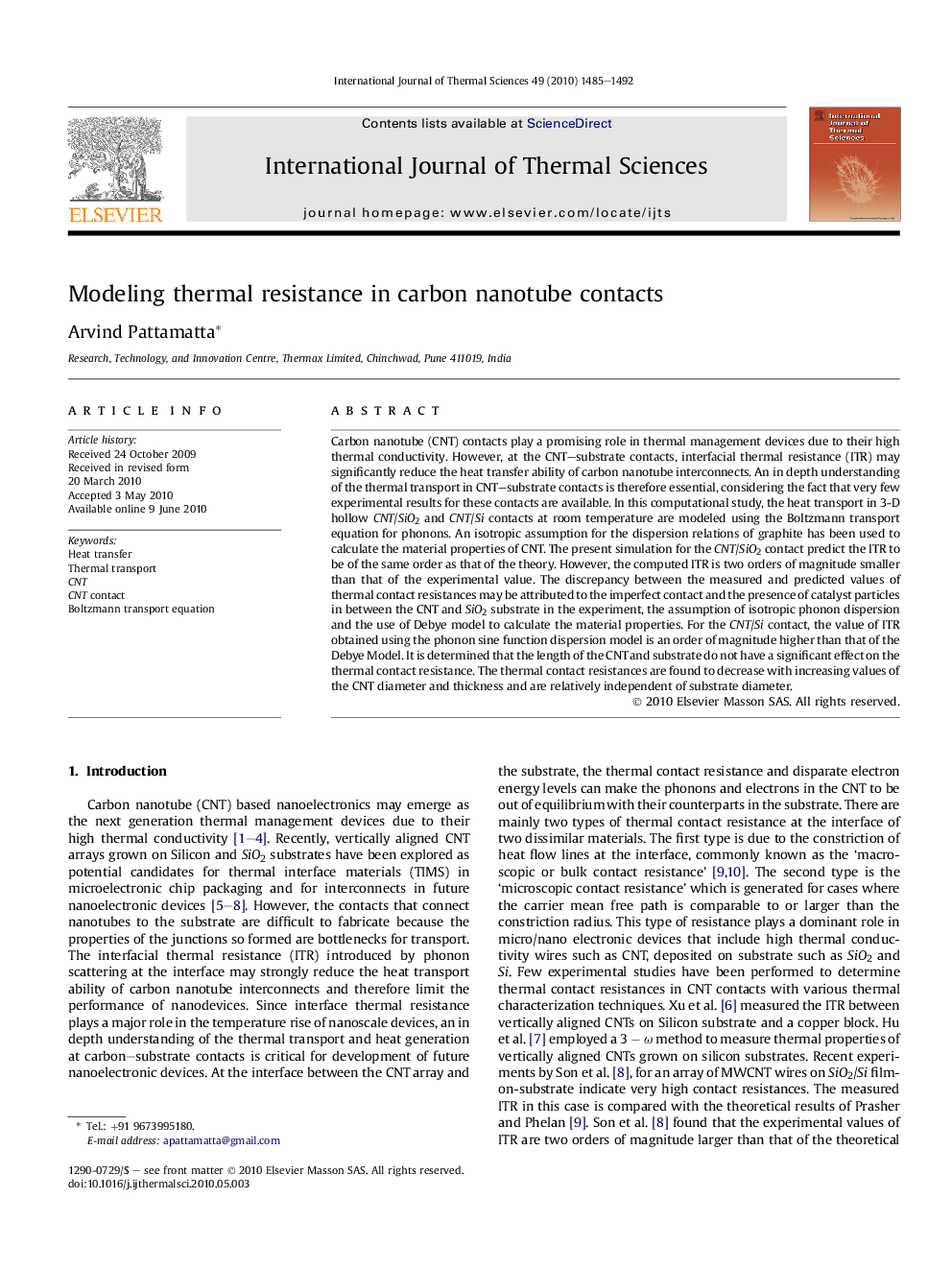| Article ID | Journal | Published Year | Pages | File Type |
|---|---|---|---|---|
| 669513 | International Journal of Thermal Sciences | 2010 | 8 Pages |
Abstract
Carbon nanotube (CNT) contacts play a promising role in thermal management devices due to their high thermal conductivity. However, at the CNT-substrate contacts, interfacial thermal resistance (ITR) may significantly reduce the heat transfer ability of carbon nanotube interconnects. An in depth understanding of the thermal transport in CNT-substrate contacts is therefore essential, considering the fact that very few experimental results for these contacts are available. In this computational study, the heat transport in 3-D hollow CNT/SiO2 and CNT/Si contacts at room temperature are modeled using the Boltzmann transport equation for phonons. An isotropic assumption for the dispersion relations of graphite has been used to calculate the material properties of CNT. The present simulation for the CNT/SiO2 contact predict the ITR to be of the same order as that of the theory. However, the computed ITR is two orders of magnitude smaller than that of the experimental value. The discrepancy between the measured and predicted values of thermal contact resistances may be attributed to the imperfect contact and the presence of catalyst particles in between the CNT and SiO2 substrate in the experiment, the assumption of isotropic phonon dispersion and the use of Debye model to calculate the material properties. For the CNT/Si contact, the value of ITR obtained using the phonon sine function dispersion model is an order of magnitude higher than that of the Debye Model. It is determined that the length of the CNT and substrate do not have a significant effect on the thermal contact resistance. The thermal contact resistances are found to decrease with increasing values of the CNT diameter and thickness and are relatively independent of substrate diameter.
Related Topics
Physical Sciences and Engineering
Chemical Engineering
Fluid Flow and Transfer Processes
Authors
Arvind Pattamatta,
